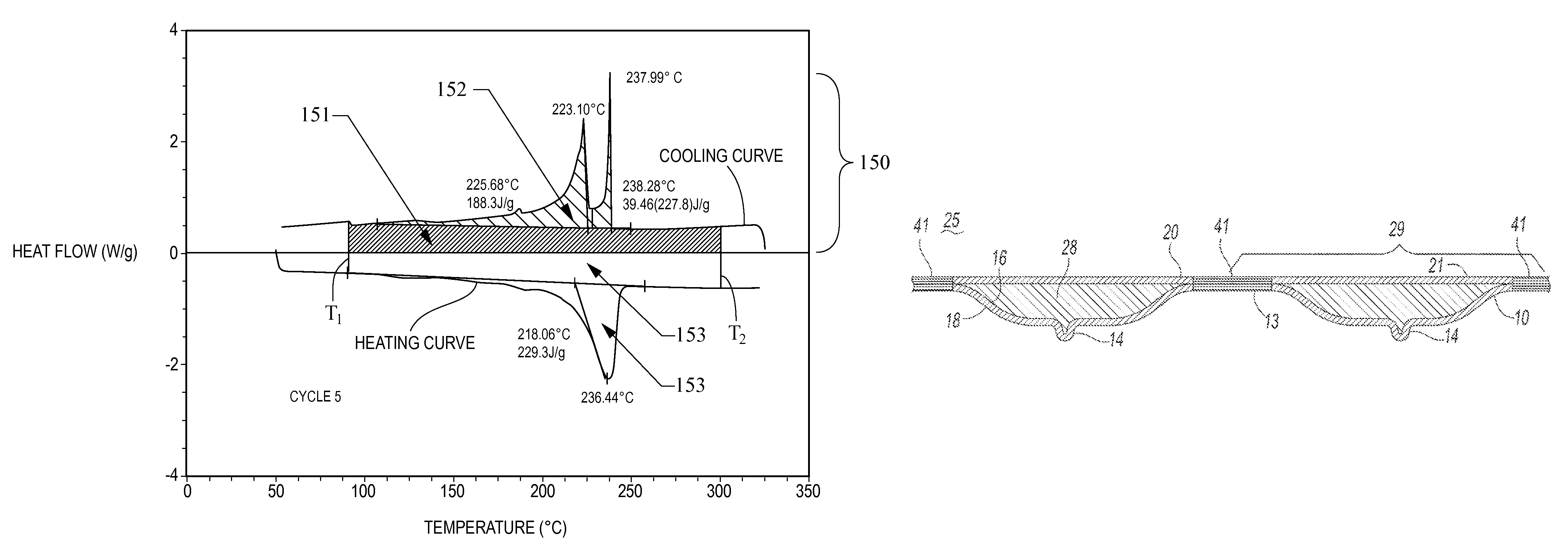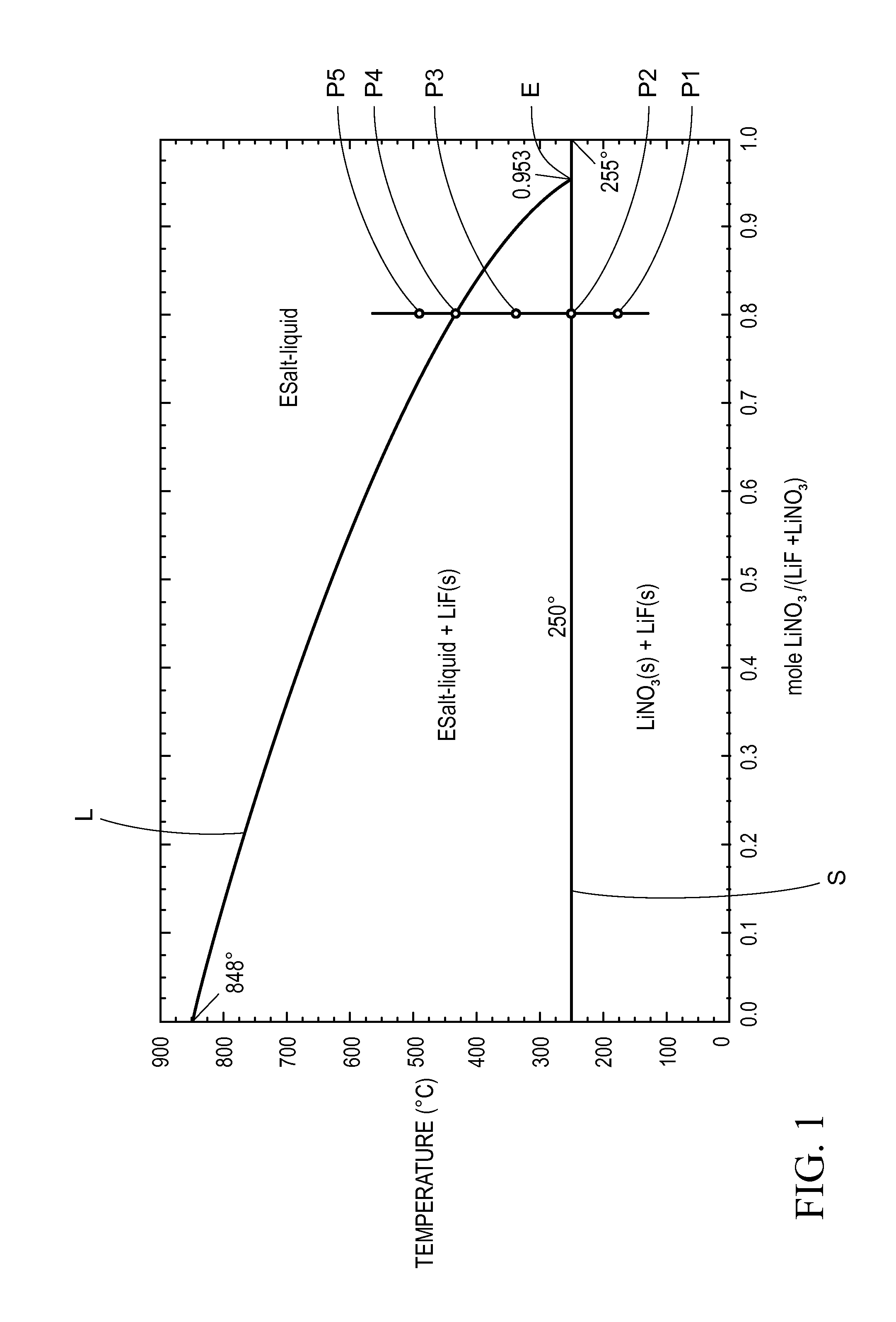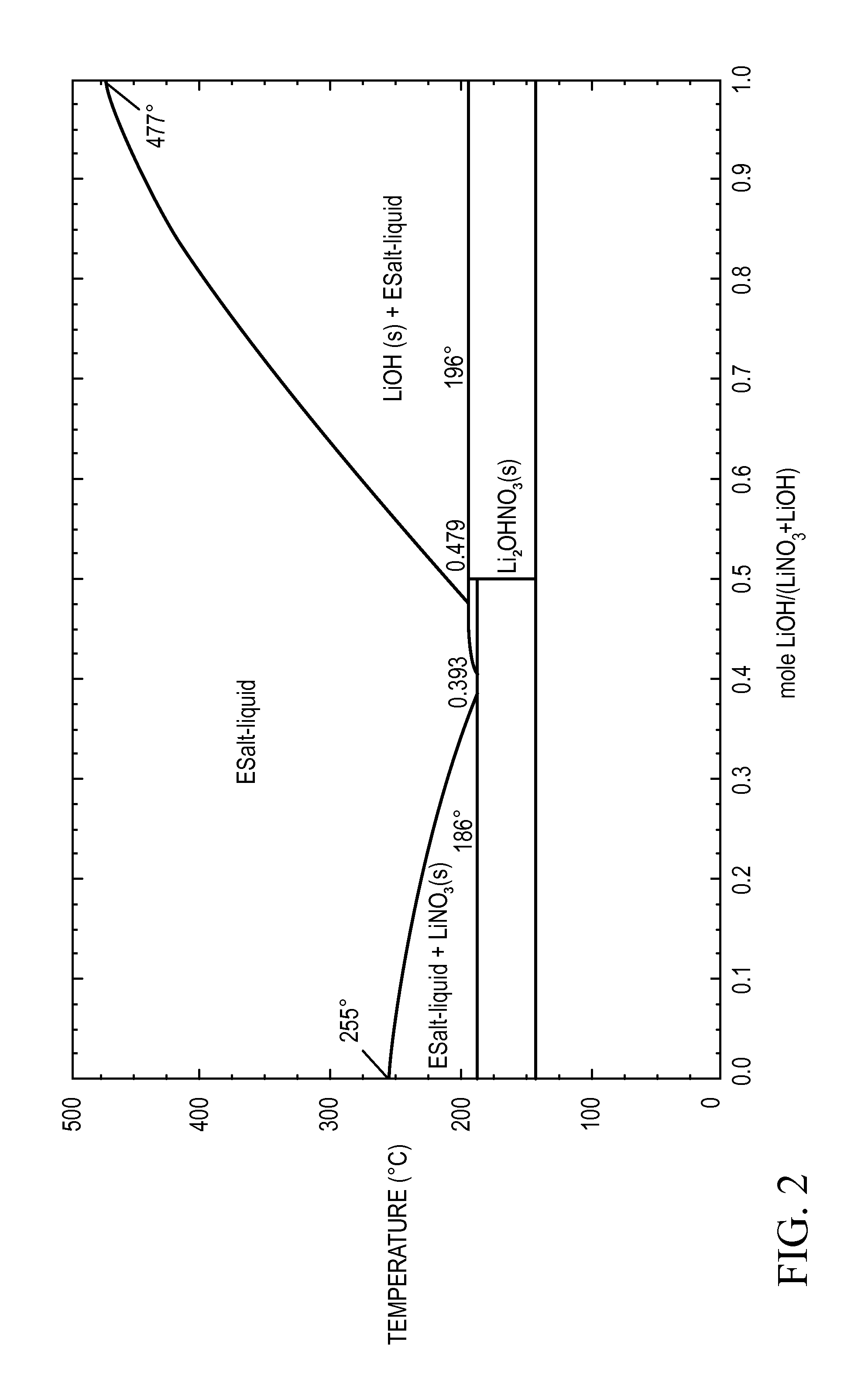Thermal energy storage materials
a technology of energy storage materials and materials, applied in the direction of stationary plate conduit assemblies, indirect heat exchangers, lighting and heating apparatus, etc., can solve the problems of complex effort to apply tesms in commercial applications, complex assembly of such tesms into functionally operative systems, and inability to achieve satisfactory service performance, etc., to achieve the effect of improving performan
- Summary
- Abstract
- Description
- Claims
- Application Information
AI Technical Summary
Benefits of technology
Problems solved by technology
Method used
Image
Examples
example 1
[0091]A 5 g mixture containing 40 mole % of powdered lithium nitrate and 60 mole % of powdered lithium hydroxide is prepared by first mixing wet grinding and mixing the two anhydrous salts with a mortar and pestle in acetone. The acetone slurry is then poured into a fused silica crucible with a fused silica lid, both lined with aluminum foil. After vacuum drying at room temperature to remove the acetone, the crucibles are placed in a furnace and heated from room temperature to 300° C. at a rate of 5° C. / min. The samples are held at 300° C. for 1 hour. While at the elevated temperature, the samples are stirred about every 5 minutes by shaking the entire furnace. These binary mixtures of lithium nitrate and lithium hydroxide are then cooled to room temperature. The liquidus temperature and the heat storage density from 300° C. to 80° C. of these samples is then measured. The heat storage density (HSD300,80) is greater than 1.4 MJ / l and the liquidus temperature is about 190° C.
example 2
[0092]A 5 g mixture of 85 mole % lithium nitrate and 15 mole % of an eutectic mixture of a mixed metal fluoride salt containing MgF2, NaF, and LiF (having a ratio of MgF2:NaF:LiF of about 10:43:47 and a eutectic transition temperature of about 630° C.) is prepared in a manner similar to Example 1. To homogenize the metal salts, a furnace is heated to 500° C. at 5° C. / min, and is then held for 1 hour at 500° C. The mixed metal fluoride dissolves in the molten lithium nitrate under these conditions. The sample is then cooled to room temperature. The sample is polished in order to perform optical microscopy studies of the structure and for compositional analysis using electron microscopy. The liquidus temperature and the heat storage density from 300° C. to 80° C. of these samples is then measured. The heat storage density (HSD300,80) is greater than 1.6 MJ / l and the liquidus temperature is about 196° C.
example 3
[0093]A 5 g mixture of 85 mole % lithium nitrate and 15 mole % of an eutectic mixture of a mixed metal salt containing NaCl, NaF, and LiF (having a ratio of NaCl:NaF:LiF of about 24:36:40 and a eutectic transition temperature of 582° C.) is prepared in a manner similar to Example 2. After homogenizing at 500° C. for 1 hour and cooling to room temperature this sample is polished in order to perform optical microscopy studies of the structure and for compositional analysis using electron microscopy. The liquidus temperature and the heat storage density from 300° C. to 80° C. of these samples is then measured. The heat storage density (HSD300,80) is greater than 1.4 MJ / l and the liquidus temperature is about 250° C.
PUM
| Property | Measurement | Unit |
|---|---|---|
| liquidus temperature | aaaaa | aaaaa |
| volume | aaaaa | aaaaa |
| liquidus temperature | aaaaa | aaaaa |
Abstract
Description
Claims
Application Information
 Login to View More
Login to View More - R&D
- Intellectual Property
- Life Sciences
- Materials
- Tech Scout
- Unparalleled Data Quality
- Higher Quality Content
- 60% Fewer Hallucinations
Browse by: Latest US Patents, China's latest patents, Technical Efficacy Thesaurus, Application Domain, Technology Topic, Popular Technical Reports.
© 2025 PatSnap. All rights reserved.Legal|Privacy policy|Modern Slavery Act Transparency Statement|Sitemap|About US| Contact US: help@patsnap.com



